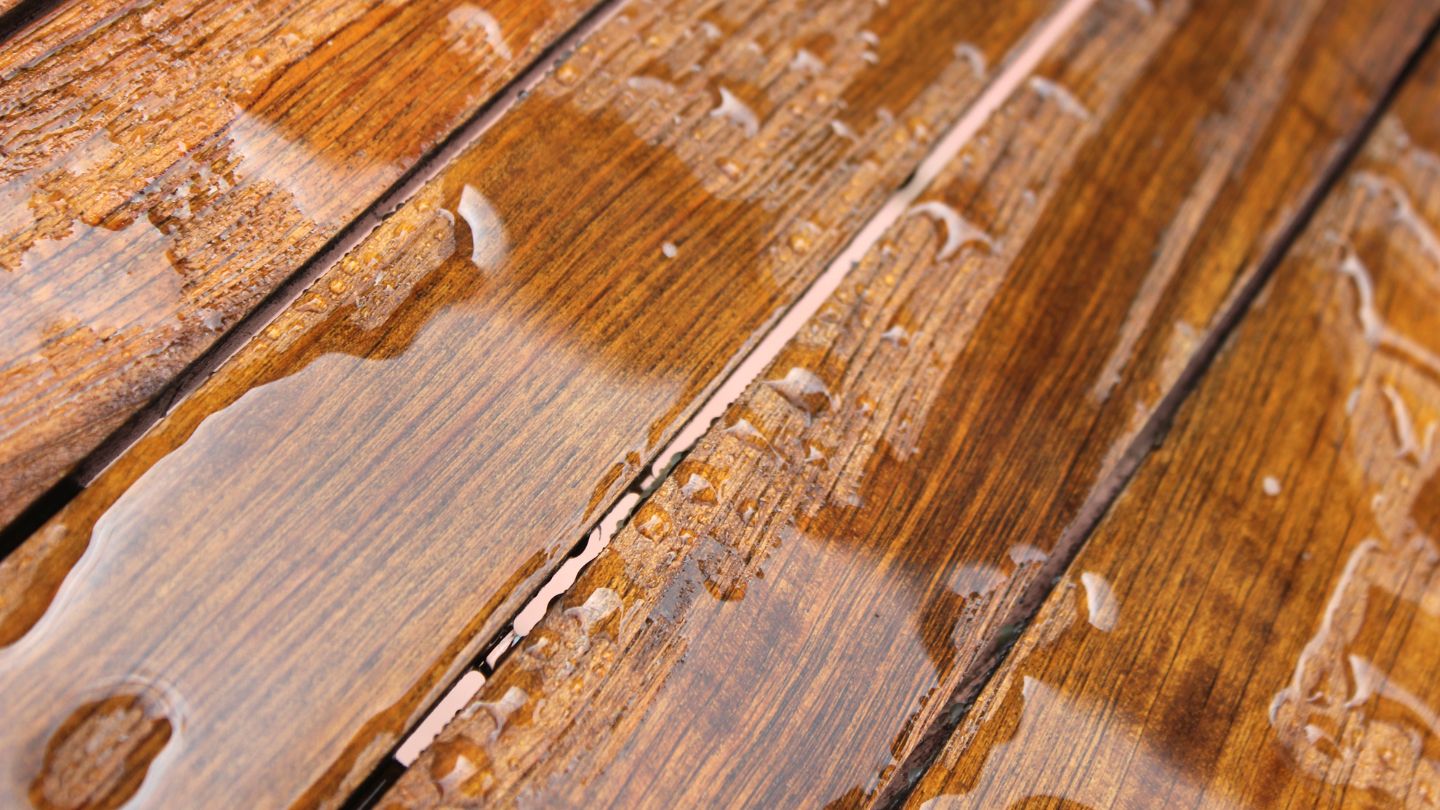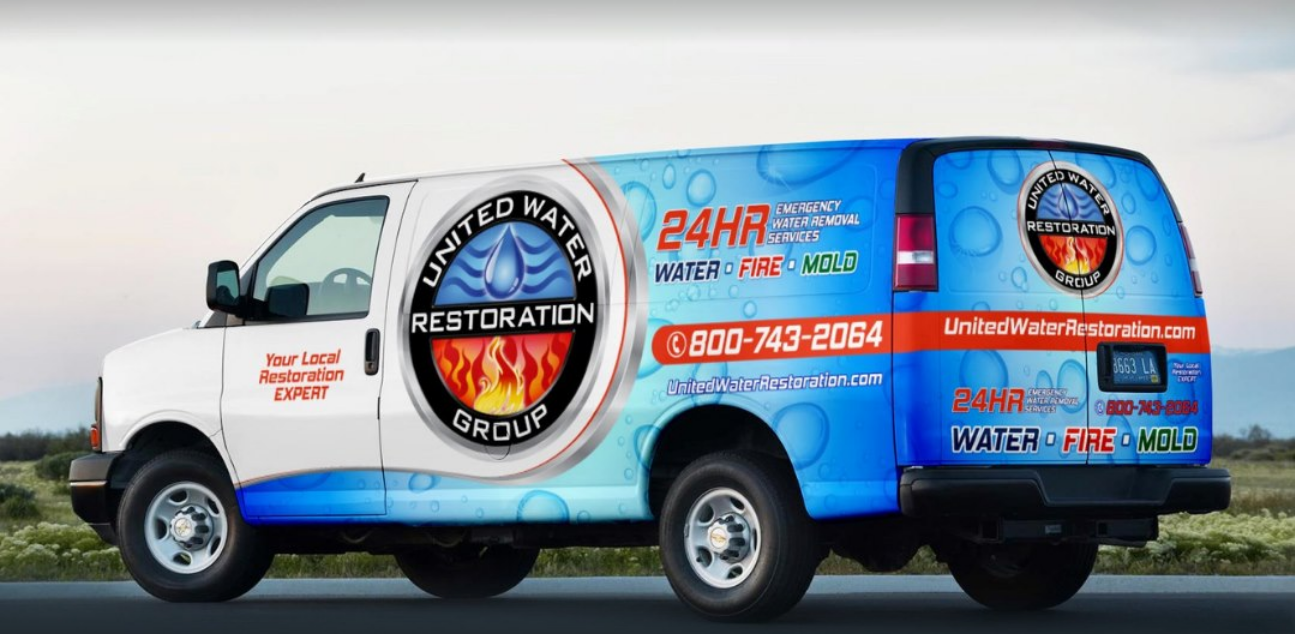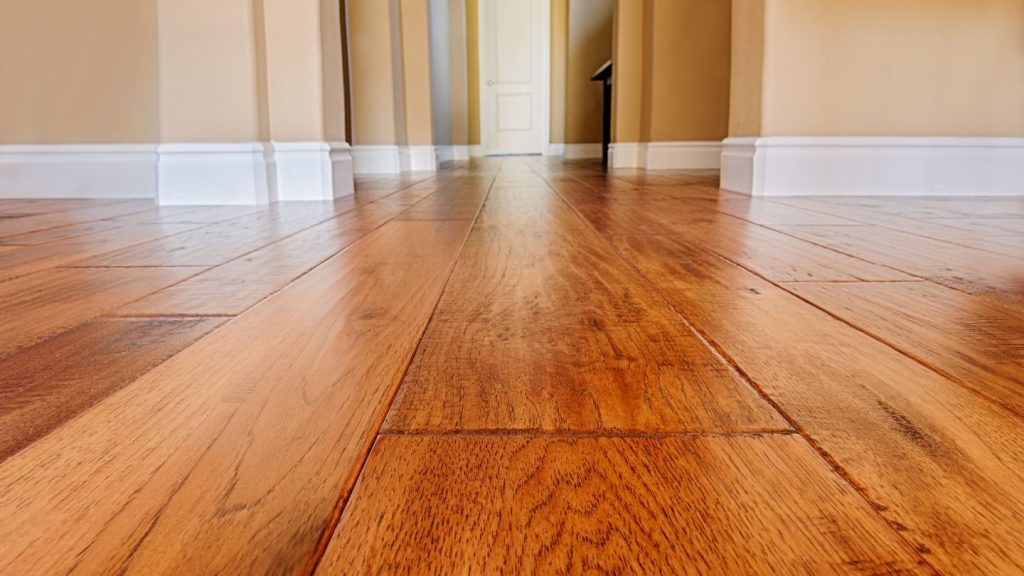Hardwood floors give elegance and warmth to a home. But unfortunately, water damage can leave these beautiful surfaces warped, discolored, and in need of repair. You can usually manage minor water damage yourself, but you’ll likely need professionals for extensive hardwood floor water damage.
This guide will help you fix water damage on your water-damaged wood flooring and make it look great again.
Act Swiftly: First Steps Matter
When you discover water damage on your hardwood floors, time is of the essence. Stopping the source is important to prevent further floor damage. If it’s a water leak or burst pipe, shut off the water supply. If it’s external water, address the entry point as soon as possible.
Use towels, a wet/dry vacuum, or a mop to absorb as much excess water as possible. Don’t push the wat
3er further into the floorboards. Improve ventilation by opening windows and doors to promote air circulation and drying. Consider using fans to increase airflow across the affected area.
Assess the Damage
Once you address the immediate threat, assess the damage and decide what action to take next. Carefully examine the affected area, noting the size, depth, and severity of the water damage. Look for warping, discoloration, and raised or buckled boards.
If the water went beneath the floorboards, inspect the subfloor for signs of damage like mold or rot. This might require removing some floorboards for inspection.
Removing the Moisture
Drying the affected area thoroughly is crucial to prevent further damage and mold growth. Keep windows and doors open, and use fans to promote air circulation and drying. Aim for consistent airflow across the entire affected area.
Renting a dehumidifier can significantly accelerate the drying process. Position it in the affected area and monitor the humidity levels, aiming for a 30-50% range. Don’t use space heaters, hair dryers, or other direct heat sources on the floorboards. It can make them warp and crack.
Removing Debris and Dirt
After the floor is mostly dry, it’s crucial to clean it well to remove any leftover dirt, debris, or water residue. Use a soft-bristled broom or vacuum cleaner to remove loose debris like dirt, mud, or sand.
For a deeper clean, mix a mild detergent with warm water in a bucket. Use a damp mop, wrung almost dry, to gently clean the affected area. Avoid saturating the floor with water.
After cleaning, rinse the floor with clean water and a clean mop to remove any soap residue. Wipe up any excess moisture with dry towels and allow the floor to air dry completely.
Addressing Minor Hardwood Floor Water Damage
For minor surface damage like scuffs or discoloration, sanding and refinishing can restore the floor’s appearance. Once the floor is dry, use a fine-grit sandpaper to gently sand the affected area. This will remove any stained or discolored surface wood.
Thoroughly vacuum the sanded area to remove dust and debris. Wipe down the area with a damp cloth to remove any remaining dust. Apply a new coat of stain or sealant, following the instructions. Match the existing finish as closely as possible for a seamless look.
Replacing Damaged Board
If the floorboards warp, buckle, or sustain severe damage, you must replace the flooring. Carefully pry up the damaged boards using a pry bar or flathead screwdriver. Work gently to avoid damaging surrounding boards.
Look for boards that match the existing floor in terms of species, thickness, and finish. If exact matches are unavailable, consider using boards from a hidden area like a closet or under appliances.
The next step is to install replacement boards. Cut them if needed, then attach to the subfloor with nails or glue, following instructions. Sand the new boards and the surrounding area to achieve a uniform texture. Put stain or sealant on the new boards, then refinish the whole area to make it look uniform.

Can Water Stains Be Removed from Hardwood Floors?
Yes, water stains on hardwood floors can often be removed, depending on the type and severity of the stain. Prevention is key to avoiding water stains. Promptly clean up spills, use rugs or mats in high-risk areas, and maintain a consistent indoor humidity level to protect your hardwood floors from water damage and stains. Here are some actions you can take to address water stains on hardwood floors
Identify the Type of Stain
Water stains on hardwood floors are typically either white or dark stains.
White stains are often caused by water that has penetrated the finish but not reached the wood. Dark stains indicate water has reached the wood fibers.
White Water Stains
For white water stains, try using a soft, dry cloth to buff the stain. If the stain persists, you can use a mixture of equal parts white vinegar and olive oil.
Apply the mixture to the stain, let it sit for a few minutes, and then gently rub it with a soft cloth.
Wipe away any excess and buff the area with a clean, dry cloth.
Dark Water Stains
Dark water stains usually indicate that water has penetrated the finish and reached the wood.
Lightly sand the stained area with fine-grit sandpaper, going with the grain of the wood.
If the stain remains after sanding, you may need to bleach the wood. Use a wood bleach product according to the manufacturer’s instructions.
After bleaching, neutralize the area with a mixture of water and vinegar, then thoroughly dry the wood.
Stain Removal Products
Commercial hardwood floor stain removers are available and can be effective for stubborn stains. Follow the product instructions carefully.
Refinishing
If the stain is deep and cannot be completely removed, refinishing the affected area may be necessary.
Sand the stained area, apply a matching wood stain, and finish with a clear polyurethane or another appropriate finish.
Additional Tips for Successful Hardwood Floor Water Damage Restoration
Feel free to seek professional guidance if you need clarification on any step of the repair process. A qualified contractor can assess the damage and recommend the best course of action for your specific situation.
Wear gloves, eye protection, and a dust mask while working to protect yourself from dust, debris, and potential splinters.
Restoring water-damaged hardwood floors requires patience. Allow the floor to dry completely at each stage before proceeding to the next step. Rushing the process can worsen the damage.
Preventing Future Hardwood Floor Water Damage Problems
After fixing, find and fix the source of the water damage to avoid it happening again. This might involve repairing leaky pipes, addressing drainage issues, or improving waterproofing measures around areas prone to water ingress.
Follow these steps and tips to fix small hardwood floor water damage and make them beautiful and functional again. Remember, for extensive damage or situations requiring professional expertise, contacting a qualified restoration company is the best course of action. With proper care and attention, you can ensure your hardwood haven thrives for years to come.

Call The Experts If You Have Hardwood Floor Water Damage
If you’re dealing with hardwood floor water damage and need professional water restoration services, don’t hesitate to reach out to United Water Restoration Group. Our team of certified experts is equipped with the knowledge and tools to restore your floors to their original beauty and ensure they remain damage-free in the future.
With our commitment to quality and customer satisfaction, we provide thorough, efficient, and effective solutions tailored to your specific needs. Contact United Water Restoration Group today for a free consultation and take the first step towards revitalizing your hardwood floors.





